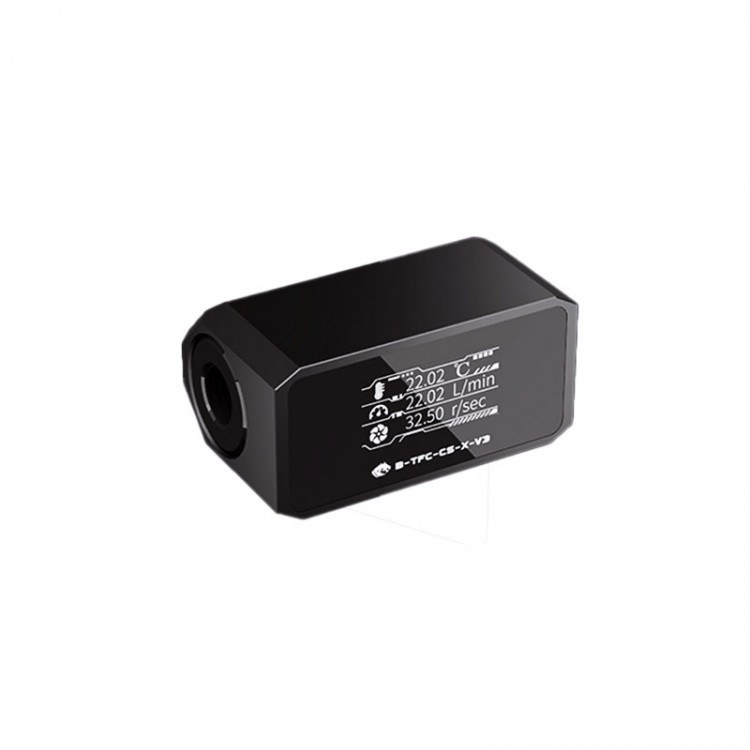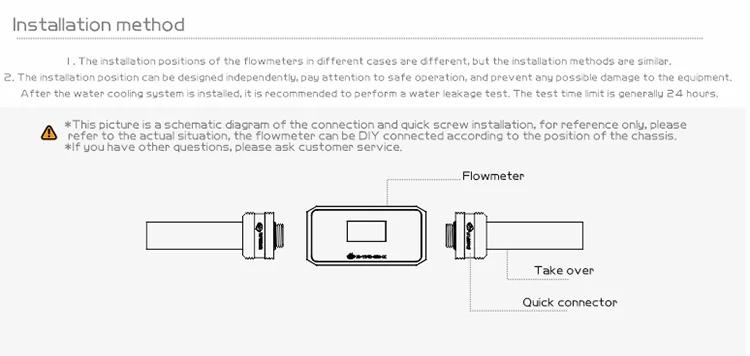
| Quantity | 3+ units | 10+ units | 30+ units | 50+ units | More |
|---|---|---|---|---|---|
| Price /Unit | $40.92 | $40.08 | $38.83 | $37.16 | Contact US |
 JD-118 +/-3.5dB High Precision Digital Noise Meter 30-130dB Sound Level Meter with 2.17-inch LCD Screen
$25.39
JD-118 +/-3.5dB High Precision Digital Noise Meter 30-130dB Sound Level Meter with 2.17-inch LCD Screen
$25.39
 JD-105 +/-1.5dB High Precision Digital Noise Meter 30-130dB Sound Level Meter with 2.17-inch LCD Screen
$25.39
JD-105 +/-1.5dB High Precision Digital Noise Meter 30-130dB Sound Level Meter with 2.17-inch LCD Screen
$25.39
 JD-861 Digital Handheld Temperature and Humidity Tester Wet Bulb Temperature and Dew Point Temperature Measurement
$22.23
JD-861 Digital Handheld Temperature and Humidity Tester Wet Bulb Temperature and Dew Point Temperature Measurement
$22.23
B-TFC-CS-X-V3 1-30LPM Water Cooler System Monitor Flowmeter Thermometer with HD OLED 5-12VDC
Features:
- Real time monitoring of the water cooling system, with simultaneous monitoring of temperature, flow speed, and flow rate in three modes, presented through a high-definition OLED display screen, accurate to the decimal point.
- The water pump automatically triggers an alarm when it stops running, making it easy to understand the working status of the water cooling system and grasp the safety limits.
- The triangular section paired with a black glass panel exudes a strong sense of technology. High performance POM material, with a textured feel and sufficient weight.
- G1/4 threaded interface, easy to install.
Specification:
- Model: B-TFC-CS-X-V3
- Color: black
- Material: POM
- Product size: 64.68 x 39.10 x 32.10mm
- Net weight: 103g
- Range: 1 - 30LPM
- Precision: full range ±10%
- Working pressure: 10bar
- Working environment: -10 ~ 70℃
- Fluid temperature range: 0~70℃ (without antifreeze); -5~70℃ (with antifreeze)
- Interface specification: G1/4
- Working voltage: 5 - 12VDC
Package Included:
- 1 x Water Cooler System Monitor
Precaution:
- Oil based water-cooling fluid: In the water-cooling system, if you use oil based insulating water-cooling fluid, it will cause the sealing ring to expand, damage its sealing performance, and increase the risk of liquid leakage.
- Alcohol and high concentration ethylene glycol water cooling liquid: In the water cooling system, if you use alcohol as the water cooling liquid, it will cause brittleness and deformation of acrylic, leading to acrylic cracking and increasing the risk of leakage.
- Corrosive water cooling liquid: In the water cooling system, if you use corrosive water cooling liquid, it will cause corrosion of the sealing ring, damage the sealing ring material, and destroy its sealing performance, thereby increasing the risk of liquid leakage.

